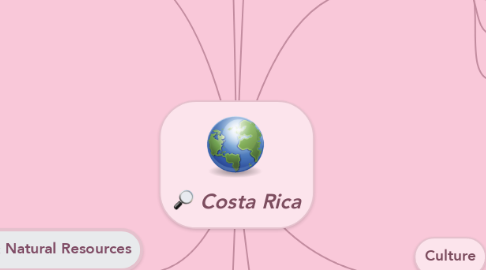Costa Rica
by Kayla Pool

1. Political System
1.1. The structure of the government is divided into three parts: legislative, executive, and judicial.
1.2. The government has divided the country into 7 provinces that consist of San Jose, Alajuela, Heredia, Cartago, Guanacaste, Puntarenas, and Limon.These provinces are then broken into cantones (similar to counties).
1.3. This country has a democratic republic. The president is responsible for being the chief of state and head of the government. There is a president vice president. The president, vice president, and fifty-seven legislative group of representatives are elected into the government every four years.
2. Modern history
2.1. In 1948, a six-week civil war occurred over a disagreement in the presidential election results.
2.2. In 1949, A new constitution was estabolished to give women and people of African descent voting rights. Armed forces were abolished and replaced by civil guard. Jose Figueres Ferrer was elected president and began a socialist program which introduced a social security system and nationalized banks.
2.3. In 1950- 1970, an unknown constitutional safety, economic growth and social progress occurred.
3. Economy & Natural Resources
3.1. Their economy decreased 0.7% in 2009, but resumed growth and increased by 3% in .
3.2. 15-20% of Costa Rica has remained in poverty for 20 years. Society's safety net collapsed because of the increase on financial limitation on government spending.
3.3. Its resources include its fertile land and successive rainfall. The country has a high literacy rate. The main exports include bananas, coffee, sugar, and beef.
3.4. Fertile Land
4. Realtions with the U.S.
4.1. The U.S established ambassadorial relations with Costa Rica in 1851, following its independence from Spain and the later conclusion of a confederacy of Central American states.
4.2. Costa Rica is currently the United State's 32nd largest goods trading partner with $19.1 billion in total (equal trade) goods trade during 2013.
4.3. Relations between the United States and Costa Rica traditionally have been strong as a result of common commitments to democracy, free trade, and human rights.
5. Travel and tourist Attractions
5.1. The Arenal Volcano stands tall at 5'427 feet over the greenery that surrounds it. This is the most active volcano in Costa Rica for 43 years. It was formed over 7,000 years ago and is still currently active. Visitors can do different activities such as rainforest hikes, whitewater rafting, and horseback riding.
5.2. The Manuel Antonio National Park is located south of Quepos on the Pacific Coast, and is 132 km from San José. This park is full of evergreen trees that stand on the tide line. The natural environment includes the primary forest, secondary forest, mangrove swamps, lagoons and, beach vegetation. There are 109 different species and people often tour the title isles that are visited by dolphins and whales.
5.3. The Celeste River is located in Tenorio Volcano National Park of Costa Rica. This waterfall is very famous because of its light blue color caused by the result of sulphur and calcium carbonate mixing.
5.4. Celeste River
6. Fun Facts
6.1. Costa Rica is the longest-standing democracy in Central America.
6.2. Costa Rica has over 130 species of fish, 220 of reptiles, 1,000 butterflies, 9,000 plants, 20,000 species of spiders and 34,000 species of insects!
6.3. Costa Rica has over 121 volcanoes
6.4. Costa Rica has no standing army.
6.5. Costa Rican women don’t take their husband’s last name.
7. Culture
7.1. A holiday that is celebrated in Costa Rica are the Palmares Fiestas which consist of two weeks of concerts, bullfighting, and folklore dancing. This event takes place the first week of January.
7.2. Their traditional food consists of salty appetizers that are served at parties, bars, and restaurants. Maize tamales are prepared by hand for Christmas.
7.3. Costa Rica's official language is spanish.
7.4. Traditional Attire
8. Impacts on Physical Geography
8.1. Costa Rica makes up 5% of the world's biodiversity.
8.2. Sugar and coffee are prodcued in the highlands. Bananas, are produced lowlands. Pineapples are grown in farms located throughout the country and exported.
8.3. Costa Rica’s surroundings allow them to have a large fishing industry focuses on the Pacific Coast and mostly exports shrimp and tuna.


